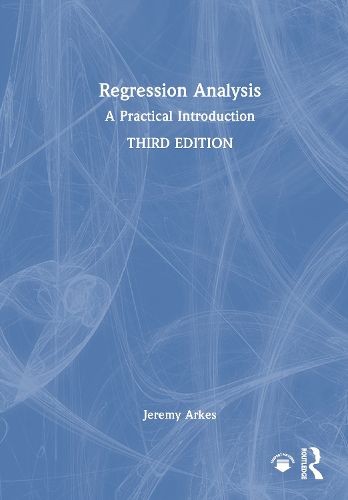Readings Newsletter
Become a Readings Member to make your shopping experience even easier.
Sign in or sign up for free!
You’re not far away from qualifying for FREE standard shipping within Australia
You’ve qualified for FREE standard shipping within Australia
The cart is loading…






This thoroughly practical and engaging textbook conveys the skills needed to responsibly develop, conduct, scrutinize, and interpret statistical analyses, without requiring any high-level math.
Regression Analysis details the most common sources of statistical biases, including some not covered in other textbooks. Rather than focusing on complicated equations, the book describes these biases visually and with examples of situations in which they could arise. As the author argues, just learning how to conduct regressions without learning how to properly assess and interpret regressions can do more harm than good. Other unique features include an innovative approach to describing the elusive concept of "holding other factors constant" and proper interpretations of the strength of evidence in light of the Bayesian critique of hypothesis testing. This third edition enhances the emphasis on ethical and responsible research practices and creates more examples demonstrating how the biases and their corrections could affect the regression results.
This is the textbook the author wishes he had learned from, as it would have helped him avoid many research mistakes he made in his career at research organizations and in academia. It is ideal for undergraduate and postgraduate students learning quantitative methods in the social sciences, business, medicine, and data analytics. It will also appeal to researchers and academics looking to better understand regressions.
$9.00 standard shipping within Australia
FREE standard shipping within Australia for orders over $100.00
Express & International shipping calculated at checkout
This thoroughly practical and engaging textbook conveys the skills needed to responsibly develop, conduct, scrutinize, and interpret statistical analyses, without requiring any high-level math.
Regression Analysis details the most common sources of statistical biases, including some not covered in other textbooks. Rather than focusing on complicated equations, the book describes these biases visually and with examples of situations in which they could arise. As the author argues, just learning how to conduct regressions without learning how to properly assess and interpret regressions can do more harm than good. Other unique features include an innovative approach to describing the elusive concept of "holding other factors constant" and proper interpretations of the strength of evidence in light of the Bayesian critique of hypothesis testing. This third edition enhances the emphasis on ethical and responsible research practices and creates more examples demonstrating how the biases and their corrections could affect the regression results.
This is the textbook the author wishes he had learned from, as it would have helped him avoid many research mistakes he made in his career at research organizations and in academia. It is ideal for undergraduate and postgraduate students learning quantitative methods in the social sciences, business, medicine, and data analytics. It will also appeal to researchers and academics looking to better understand regressions.